 Movies and TV
Movies and TV  Movies and TV
Movies and TV  Creepy
Creepy 10 Eerie & Mysterious Ghosts of the Pacific Coast
 Weird Stuff
Weird Stuff 10 Typos That Accidentally Changed History
 History
History 10 Times Trickery Won Battles
 Technology
Technology 10 Awesome Upgrades to Common Household Items
 Misconceptions
Misconceptions 10 Hilarious (and Totally Wrong) Misconceptions About Childbirth
 Weird Stuff
Weird Stuff 10 Warning Labels That Exist Because Someone Actually Tried It
 Health
Health Ten Confounding New Inventions from the World of Biomedicine
 Creepy
Creepy 10 Death Superstitions That Will Give You the Creeps
 Movies and TV
Movies and TV 10 Movies That Get Elite Jobs Right, According to Experts
 Movies and TV
Movies and TV 10 Most Realistic Medical TV Shows of All Time
 Creepy
Creepy 10 Eerie & Mysterious Ghosts of the Pacific Coast
 Weird Stuff
Weird Stuff 10 Typos That Accidentally Changed History
Who's Behind Listverse?

Jamie Frater
Head Editor
Jamie founded Listverse due to an insatiable desire to share fascinating, obscure, and bizarre facts. He has been a guest speaker on numerous national radio and television stations and is a five time published author.
More About Us History
History 10 Times Trickery Won Battles
 Technology
Technology 10 Awesome Upgrades to Common Household Items
 Misconceptions
Misconceptions 10 Hilarious (and Totally Wrong) Misconceptions About Childbirth
 Weird Stuff
Weird Stuff 10 Warning Labels That Exist Because Someone Actually Tried It
 Health
Health Ten Confounding New Inventions from the World of Biomedicine
 Creepy
Creepy 10 Death Superstitions That Will Give You the Creeps
 Movies and TV
Movies and TV 10 Movies That Get Elite Jobs Right, According to Experts
10 More Awesome Facts About South Korea
South Korea is one of the most interesting countries in the world. Asia is enamored with Korean food, music, and TV programs, its influence rivals that of China and Japan, and the Boston Consulting Group named it the most innovative country in the world. Not too bad, considering South Korea has only been around since 1948. The Land of the Morning Calm is a rising power full of curious customs and fascinating facts.
10 Alcohol
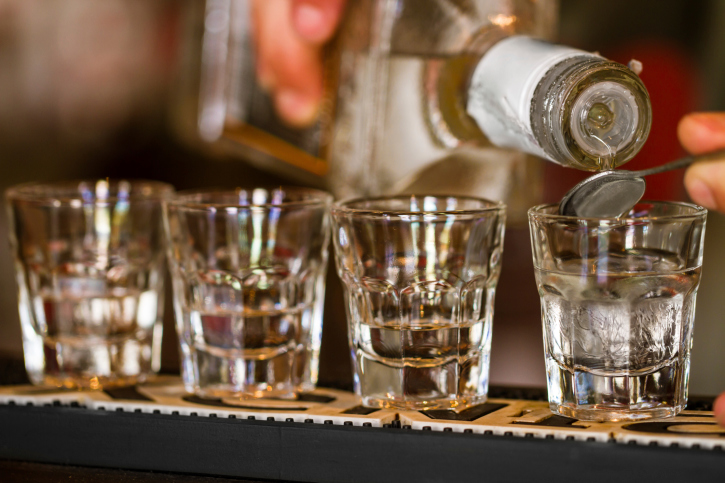
Drinking is an important part of South Korean society. It’s how people socialize and get to know each other. At least once a month, and sometimes even once a week, Koreans go out to eat and drink with their coworkers. These events are known as “hoesik” and involve a lot of alcohol. However, there are lots of rules when it comes to drinking. If an elder pours you a beer, you have to hold your glass with both hands. And if you pour a drink for someone older, keep both hands on the bottle. Only seniors or people in authority can use one hand. And remember to always wait for the senior to drink first, and when you down a shot, turn away from him so he can’t see you drinking.
Even if you don’t drink, you should accept the first glass offered, or people will think you’re a jerk. Always keep a bit of alcohol in your glass, and never ever pour your own drink. You should also keep in mind that once the alcohol starts flowing, it’s not going to stop anytime soon. There are no limits during a “hoesik.” People keep drinking and drinking and all the while shouting “Kon-Bay!” which is the equivalent of “Cheers!” And when they wake up the next morning, many help themselves to a bowl of pork-based soup known as “haejangguk.” The name translates to “hangover soup,” and as promised, it’ll clear up those splitting headaches. But sooner than later, it’ll be “hoesik” time again, so if you see a bunch of businessmen staggering down the street, just blame the alcohol.
9 Red Ink

Every society has its own odd superstitions, and while Westerners worry about black cats, open umbrellas, and spilled salt, Koreans can’t stand red ink. Supposedly, if you write someone’s name with a red pen, that person is going to have some really bad luck in the near future. They might even die.
So why does red ink send some Koreans into red alert? Well, when a South Korean has shuffled off this mortal coil, his or her name is written in a family register and on funeral banners with red ink. Some believe the red ink drives away demons and protects the dead, but if you write the name of a living person in red, you get the reverse effect. So if you’re ever signing a contract, writing a letter, or grading a paper, play it safe and use black instead.
8 The Appropriate Handshake
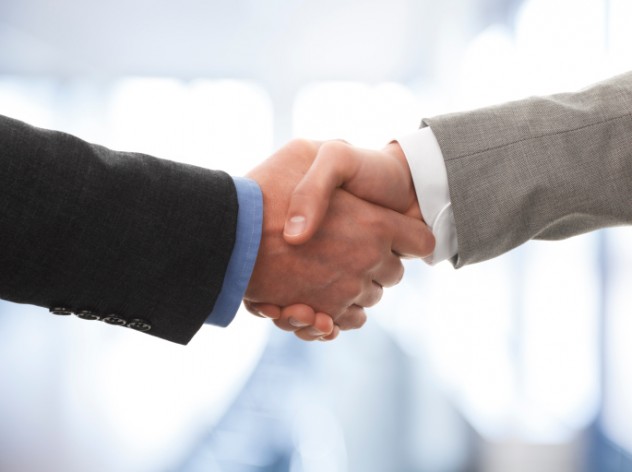
Bill Gates sent the South Korean media into a frenzy earlier this year when he met South Korean president Park Geun-hye. Many people found his behavior inappropriate, newspapers and talk shows analyzed his insensitivity, and Internet chat rooms debated his rude gesture. What did he do to upset so many people? When Gates gave President Park a handshake, he kept his left hand in his pocket.
In South Korea, there’s a right and wrong way to shake hands, and it has to do with status. One-arm handshakes are casual, and in certain circumstances, they can imply superiority. If you’re shaking hands with a buddy or someone your age or younger, feel free to use one hand. But if you’re meeting someone older or someone in a position of authority, you’d better use two. (On the flip side, it’s okay for seniors to use one hand. They outrank you). So if you ever shake hands with your South Korean boss, you need to prop up your forearm with your free hand. A small bow would be nice, and always look into the eyes. After all, good manners are important, even if you’re the richest man in the world.
7 South Korean Education

South Korean students are exceptionally bright. They rank number two in the world when it comes to reading, they have a 93 percent graduation rate (whereas the US only has 77 percent), and they have the second best education system in the world. So how’d they get so brainy? It all has to do with “hagwons.”
Hagwons are privately run institutions and almost always open—even when public school is out. Kids attend these academies to study subjects ranging from math and science to taekwondo, ballet, and even belly dancing. The best teachers attract the most students, and some teachers are so popular that they earn millions of dollars a year. However, teachers who don’t perform well are put on probation. It’s capitalism in action, and hagwons are money-making machines. Korean parents spend $17 billion a year on academies. Compare that to the $15 billion a year Americans spend on video games. In fact, hagwons are so successful that companies like Goldman Sachs and A.I.G. invest in the Korean education system.
However, there’s a dark side to the hagwon system. The richest families get the best teachers while poorer students are stuck with sub-par tutors. Even worse, hagwon classes take place immediately after school so students are attending school twice a day and coming home mentally and physically exhausted. Under President Lee Myung-bak, the Korean government actually banned hagwons from operating past 10:00 p.m., as students need to rest. This overwhelming drive to do well has to do with the College Scholastic Ability Test (CSAT). If a student does well on the CSAT, they can attend a good college, but if they do poorly, they’ll be forced to attend a lousy school. With all this pressure, it’s no surprise that South Korea has a very high rate of student suicides. So are the benefits worth the drawbacks? Only the students can say.
6 Korean-Japanese Rivalry
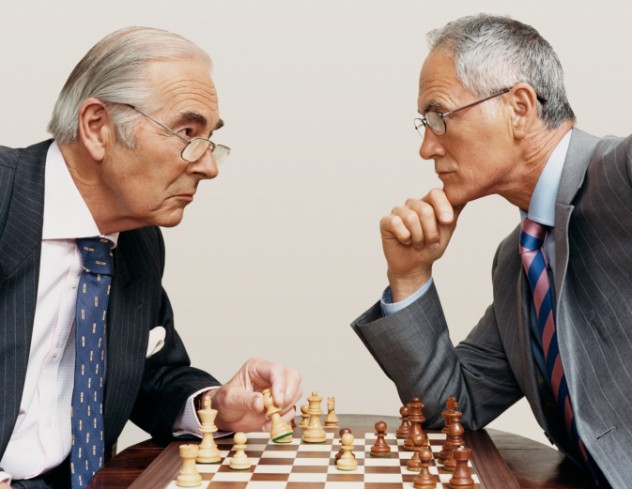
Lots of countries have friendly rivalries—Australia and New Zealand for example—while some are little more explosive, a la Pakistan and India. Somewhere in between these two extremes lie South Korea and Japan. While these two nations won’t be launching nukes at each other any time soon, they’ve definitely had some heated exchanges over the last few years.
In the past, Japan had a bad habit of invading the Korean peninsula. After several failed attempts, the Japanese successfully conquered Korea in 1910 and ruled with a heavy hand, forcing Koreans to practice Shintoism and to speak Japanese. Things got worse during World War II, when the Japanese military forced nearly 200,000 women, most of them Korean, to work as prostitutes (aka “comfort women”) in brothels across China. On top of that, thousands of Koreans were tortured in the infamous Unit 731.
Decades later, many South Koreans still hold a grudge and feel that Japan hasn’t properly apologized for its war crimes. Over 20 years ago, the Japanese government admitted that atrocities took place, but since then, there’s been some backsliding. Some Japanese politicians claim the women volunteered to become prostitutes, while one mayor actually said “comfort women” were necessary to the Japanese war effort.
The issue is further complicated by a group of islands off the coast of South Korea. Alternately called Dokdo (Korean) and Takeshima (Japan), these islands have stirred up as much as controversy as World War II. South Korea claims they’ve controlled the islands since 1696, while the Japanese say they’ve owned the island since the mid 1600s.
So it should come as no surprise that Koreans and Japanese citizens don’t get along. In 2012, Gallup Korea took a poll to see which country Koreans despise the most, and a whopping 44.1 percent chose Japan, while North Korea scored a measly 11.7 percent. This anti-Japanese bias sparks all sorts of interesting controversies. For example, Koreans refer to the “Sea of Japan” as the “East Sea.” And when UFC welterweight champion Georges St-Pierre wore the Rising Sun emblem on his karate gi, featherweight competitor Jung Chan-Sung (“The Korean Zombie”) wrote a strongly worded public letter letting both GSP and the world know that Koreans view the Rising Sun the same way Jews view the swastika. Even during the 2012 Olympics, South Koreans were upset when Japanese soccer players wore the infamous symbol on their jerseys. So it should get pretty interesting when Korean athletes travel to Tokyo for the 2020 Olympics.
5 The Skirt Controversy

South Korea is a very conservative country, so it’s a bit surprising to see so many legs. The “no pants” fashion is in vogue, and miniskirts and micro shorts are the norm. Even business women regularly wear miniskirts to work. But Korea wasn’t always so liberal when it came to showing off your gams.
From 1963 to 1979, South Korea was ruled by dictator Park Chung-hee, and under Park’s regime, women’s clothing was heavily regulated. It was illegal for women to wear skirts ending twenty centimeters above the knee or higher, and schools strictly enforced the law by having teachers measure skirts before class. (The codes were so rigid that even women’s hair length was determined by law).
Today, many Koreans are worried their country might return to a fashion police state. The government recently passed an “overexposure bill,” sending the Korean media and fashionistas into panic mode. However, politicians say the law is meant to punish only the indecently exposed, so K-pop fans across the world can relax.
4 Toilet-Themed Amusement Park

There are plenty of bizarre theme parks across the world, but South Korea is home to the crappiest. The city of Suwon boasts not only Samsung Electronics, but the world’s first toilet-themed amusement park. The Restroom Cultural Park opened in 2012 in honor of Suwon’s beloved ex-mayor Sim Jae-duck, affectionately known as “Mr. Toilet.”
Mr. Toilet was obsessed with, well, toilets. Sim Jae-duck’s goal in life was to provide mankind with hygienic toilets and teach the world about toilet maintenance. Mr. Sim founded the World Toilet Organization, and when the World Cup came to South Korea in 2002, he provided clean toilets for thousands of FIFA fans. The WTO has since gone on to build modern toilet facilities in third-world countries, such as the Philippines.
In 2007, Sim built a bizarre, toilet-shaped building which served as the center for the WTO, and after Sim’s death in 2009, it was turned into a museum. While this “theme park” lacks any rides (probably a good thing), it’s filled with all sorts of toilet paraphernalia, such as medieval bedpans, Korean squat toilets, a urinal sculpture by Marcel Duchamp, and bronze statues of people in the process of relieving themselves. And like all the best things in life, the Restroom Cultural Park is free.
3 Plastic Surgery
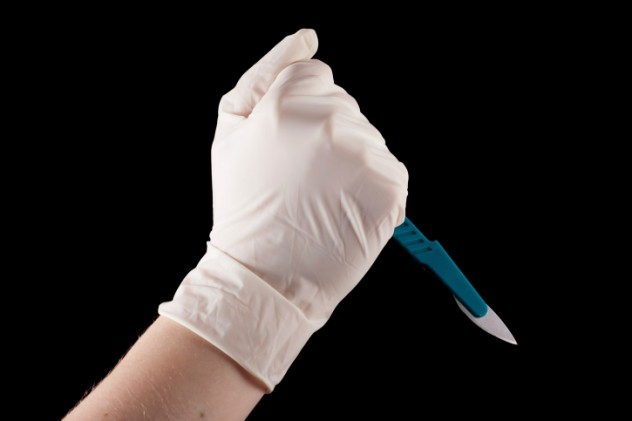
Everyone wants to be beautiful, especially South Koreans. According to a 2009 survey, one in five Korean women have had plastic surgery, and unlike other countries, there’s no shame in going under the knife—it’s just the normal thing to do. High school girls are often encouraged by their parents to have work done on their faces, and plastic surgery is a common graduation present. One of South Korea’s most popular reality shows features “ugly” people who are made “beautiful.” Even the 2012 Miss Korea had plastic surgery, and everyone was okay with that. And women aren’t the only targets of the cosmetic industry. Men are constantly told their personal and professional lives would be so much better if only they’d alter their appearance.
Most women want the same look, which includes small noses, V-shaped chins, and big eyes. However, many Koreans are paying a steep price for their new looks. Fifty-two percent of women who have had corrective surgery have lost any feeling in their faces as well as the ability to chew and swallow. And now, some are investing in a new, even more disturbing surgery known as the “mouth corner lift.” People are actually paying to have their mouths curved upward into permanent smiles. This way, they’ll be all smiles, even if their faces are paralyzed.
2 Bullfighting
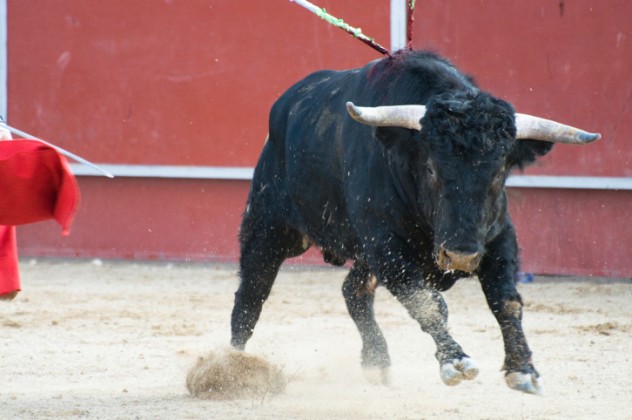
In South Korean bullfighting, there’s no matador, no red cape, and no swords. It’s just bull versus bull. Close to 500 ranchers travel across South Korea, searching for the perfect fighting machine. They pick their warriors from herds headed to the meat market, and when choosing, ranchers look for animals with big horns, thick necks, and low torsos. Ranchers then put their bulls on rigorous training programs, which begin with molding their horns with wires, forming deadly hooks. The bulls then work out on mountain tops, dragging tires filled with rocks, butting their heads against trees, and jogging with their owners. Afterward, the animals are given treats, such as body rubs. These fighting bulls also have special diets consisting of fish, live octopus, and snakes.
When it’s finally time to lock horns, ranchers give their bulls liquid courage in the form of soju (grain liquor) because it’s always great idea to get your one-ton, testosterone-charged death monster drunk before a fight. The arena itself is packed with musicians, cheerleaders, and spectators snacking on local beef. Bulls are then led into the amphitheater, with their names painted on their sides (e.g. Power Punch, Flying Tiger and Komodo Dragon). The bulls are drawn together with ropes, and the battle begins. Fortunately, there’s not much gore, and all of the bulls usually survive. The match ends when one of the bulls walks away, so fights can end in seconds or go on for hours. When the battle is over, the winner takes with the prize money, while the losers (both rancher and bull) drown their sorrows in rice wine. Nothing mixes like bulls and booze.
1 Jellyfish Terminators
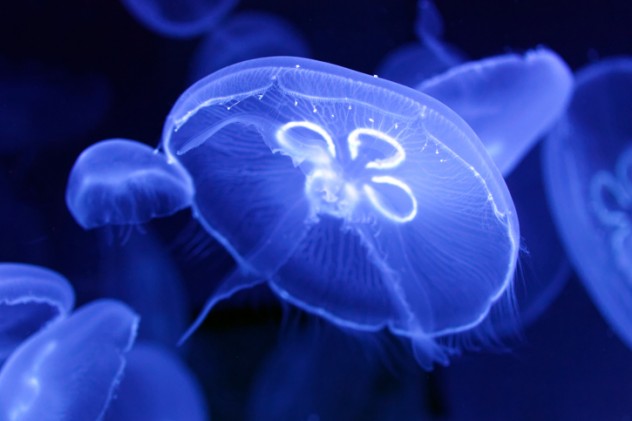
It’s like the premise of a sci-fi movie. The oceans of the world are invaded by swarms of jellyfish, and a team of scientists must assemble robots to do battle with the deadly jellies. Only it’s not a movie: It’s happening off the coast of South Korea, and soon it might happen across the world.
The number of jellyfish worldwide is growing, and this is causing quite a few problems. Swarms of jellies can spread across hundreds of miles, disrupt commercial fishing, and force tourists to stay away from beaches—which affects the economy. South Korea alone has lost $300 million thanks to plagues of jellyfish, and a nuclear power plant in Sweden was recently forced to shut down after jellies plugged the pipes, which provided water to cool its reactors. So the scientists at the Korean Advanced Institute of Science and Technology have banded together to fight the gelatinous hordes.
Enter the Jellyfish Terminators. Known as JEROS (Jellyfish Elimination Robotic Swarm), these robots hunt in packs and wipe out any jelly that gets in their way. The lead robot is programmed with directions, and the other JEROS follow its lead, receiving directions wirelessly. The robots, which float above the water, use cameras to find their prey. Once they’ve locked on, they trap their quarry with nets and cut them to shreds with razor-sharp propellers. Originally, JEROS could kill 900 pounds of jellyfish per hour, but now they’re able to slice and dice nearly 2,000. That’s a lot of dead jellyfish. Currently, scientists are making sure JEROS can withstand waves and work together efficiently. Soon, the Korean coastline will be jellyfish free, then it’s only a matter of time before the JEROS turn on the swimmers.
Nolan Moore enjoys eating tteokbokki chips, watching “The Host” and teaching English to South Korean students. Not all at the same time.








